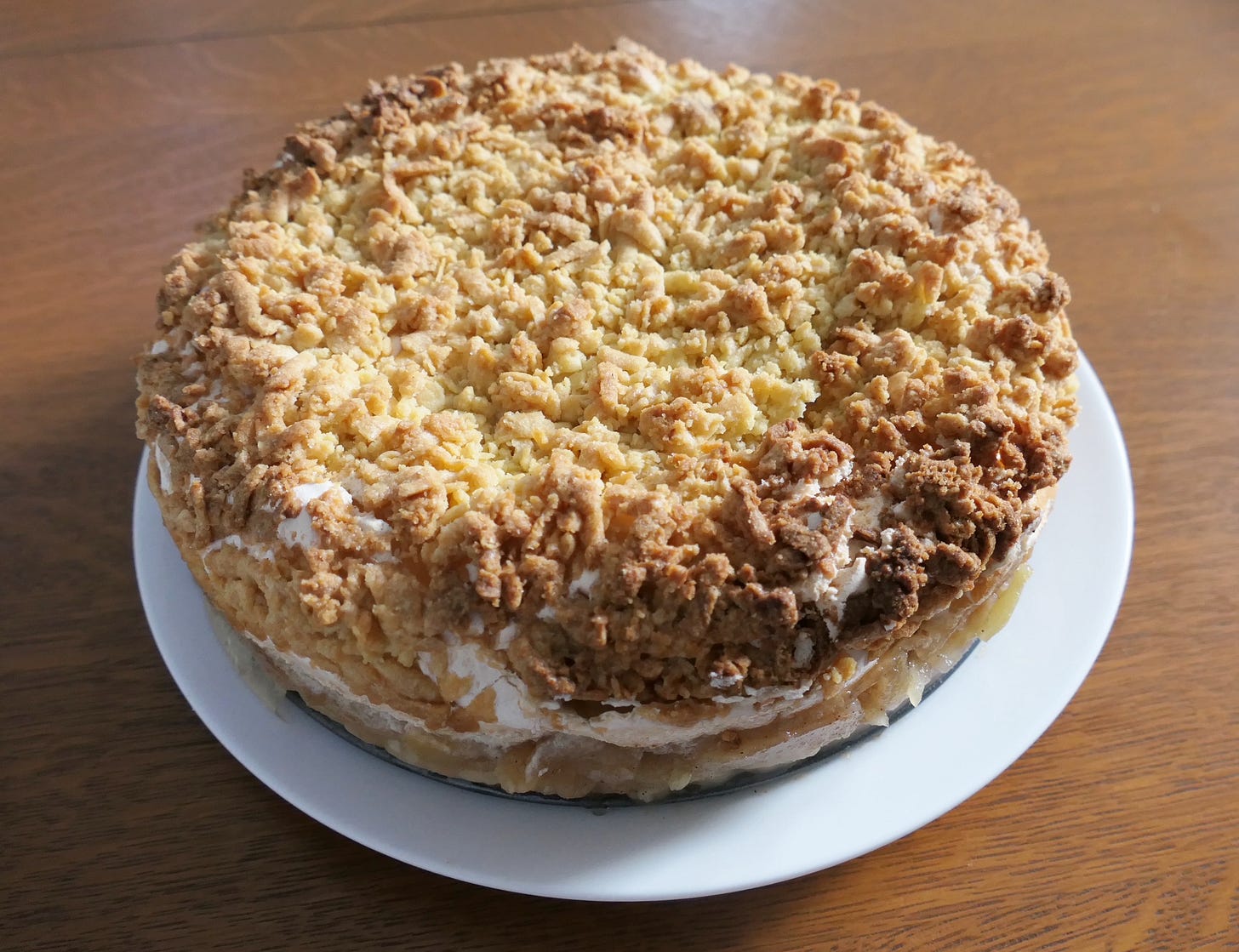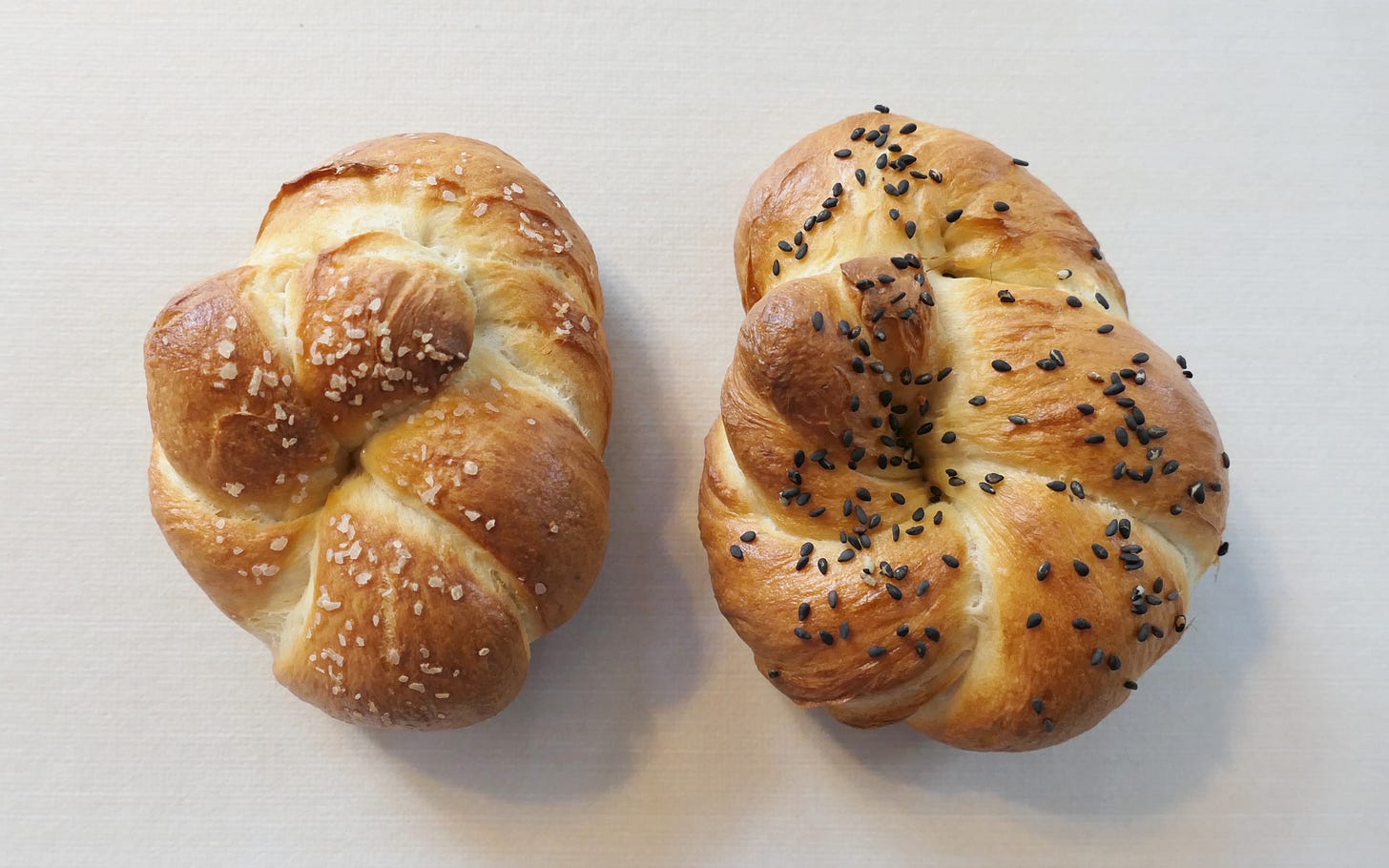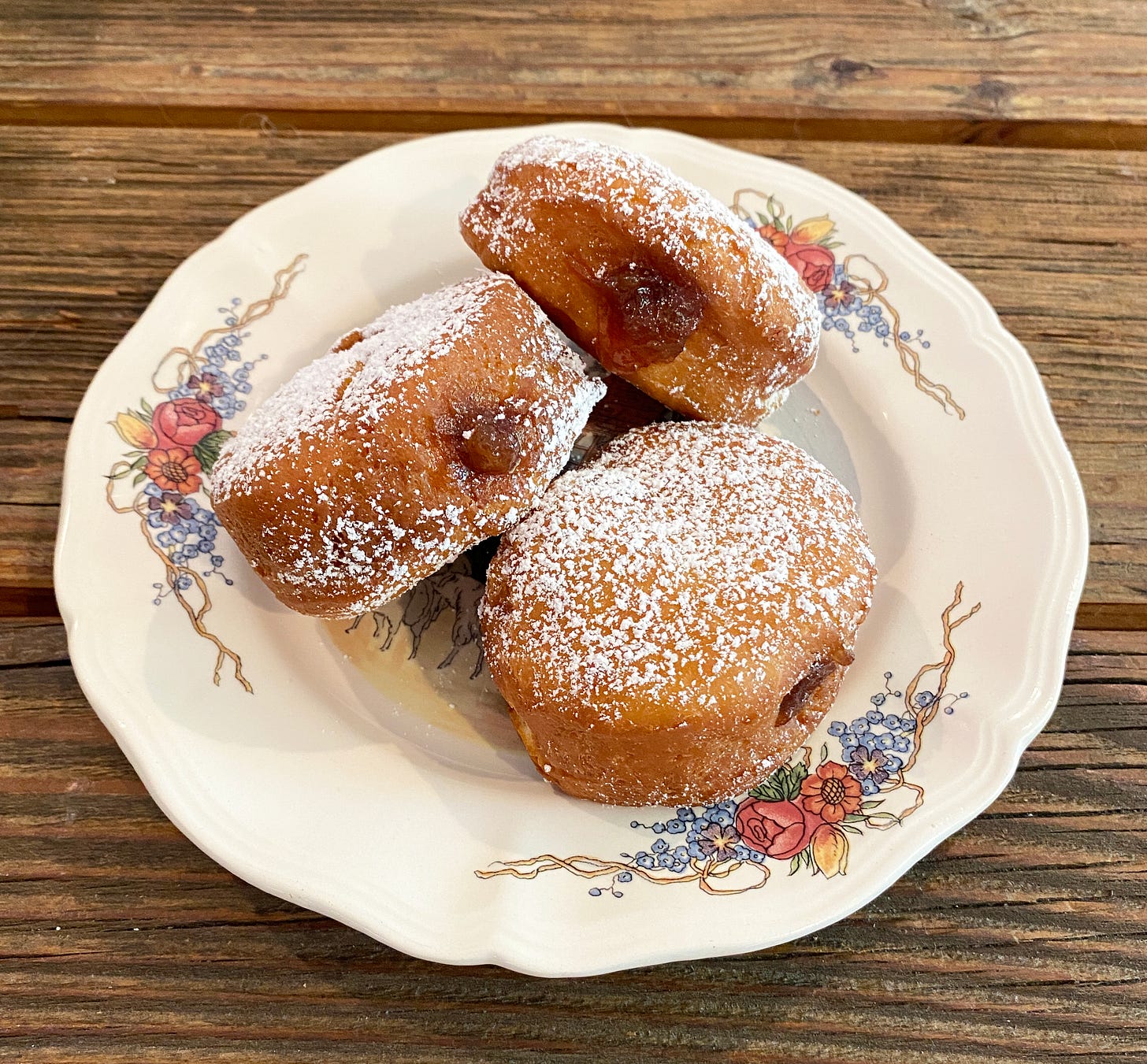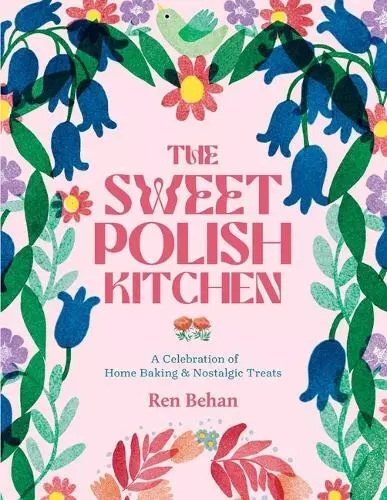First Thoughts
- The book aesthetic feels very “cottagecore,” a recent internet trend of romanticized country life. Photographs have layers of flowers, embroidered linens, and lace—some of which are from the author’s personal family collection.
- Recipes are the perfect fall comfort food with dumplings, fritters, cakes, with enough differences from classic American baking to be enticing.
- Although the recipes lean sweet, there is an element of balance to be just sweet enough.
The Review
The ‘Sweet Polish Kitchen’ by Ren Behan seamlessly blends the author’s Polish heritage with food history and modern-day glimpse into European cafe culture. This book follows Behan’s first book ‘Wild Honey and Rye’ to shine a light on the sweet side of Polish cooking.
The recipes harken back to simpler times in the countryside with ingredients like honey, apples, bilberries (European blueberries), plums, poppy seeds, and a Polish farmer’s cheese called twaróg sernikowy. If you love farmer’s cheese, or cream cheese, you’ll be happy to find it in 15+ different dishes ranging from dumplings, ice cream, to four different variations of cheesecake. The book’s design also is an ode to the past without the photography feeling stuffy or overdone. Cakes are served with tea, cookies are in the process of being frosted, and breads accompany a breakfast spread. Most of the recipes are approachable comfort food, but there are also more show-stopper layer cakes. The book has a lot of recipes, but unfortunately does not have a photograph for every single one. Additionally, there were a couple cases where I couldn’t easily find a key ingredient locally—like white rye flour for the gingerbread recipes.
Chapters are sorted by occasion: Polish Classics, Layer Cakes, Carnival Treats, Seasonal, Pancakes and Pierogi, Bread, and Desserts. From each recipe, you get a glimpse into important parts of Polish culture and the connection to Behan’s childhood memories. I learned a lot about Polish food history from the recipe headers but would have loved more insight into the author’s family stories beyond what was covered in the introduction. Additionally, it would have been interesting to see some creative interpretation and recipe development beyond what is traditional.
Recipe Test & Highlights
It’s fall and the recipes I tested were the perfect comfort food and a great way to make a dent in a fridge full of apples. I tested Szarlotka (Apple Cake with a Meringue and Crumb Topping), Krakowian-Style Bagels, and Paczki (Classic Polish Doughnuts with Jam).
The Szarlotka (Apple Cake with a Meringue and Crumb Topping) takes a humble apple cake to the next level but maintains a rustic presentation. It has a butter crust, apple layer, meringue, and crumb topping baked in a round cake pan. The approach to the crumb topping was brilliant, grating the same dough as the bottom crust on top of the meringue. The cake captured the pure taste of apple, looked exactly like the photo, but was messy cutting through all of the different crumbly layers.

According to the author, Krakowian-style Bagels (recipe below) are a popular street snack in Poland and have a special Protected Geographical Indication (PGI) status to promote special regional food products. Behan says that they are sort of bagel-pretzel hybrid which is pretty accurate. If you are someone that is partial to the “twist” part of the pretzel then you will love these bagels.
Krakowian-Style Bagels
7 g active dry yeast
1 Tablespoon sugar
240g (2 cups) all-purpose flour
1/2 cup lukewarm milk
1 teaspoon salt
1/2 cup lukewarm water
2 Tablespoons vegetable oil
1 teaspoon baking soda
1 Tablespoon honey
sesame seeds, poppy seeds or sea salt for sprinkling
- In a small bowl, combine the yeast with the sugar, 1 Tablespoon flour, and lukewarm milk. Allow to sit for 15 minutes.
- Pour the yeast mixture into a bowl of a mixer and add the remaining flour, salt, water, vegetable oil for 5-7 minutes until the dough comes away from the sides of the bowl. Cover and allow to rest for 30 minutes.
- Preheat oven to 450°F (230°C). Line two baking sheets with parchment paper.
- Split the dough into 6 pieces, roll each piece into a long strip, about 20 inches (50 cm). Fold each strip in half and twist. Join the ends together to form a ring.
- Prepare a large pot of boiling water with the baking soda and honey. Drop each dough ring into the water for 30 seconds.
- Use a slotted spoon to transfer the bagel to lined baking sheet. Sprinkle with sesame seeds, poppy seeds, or sea salt. Bake for 15 minutes until medium brown. Enjoy soon after baking.

Growing up in Michigan where there is a population with Polish heritage, I couldn’t resist trying to make Paczki (Classic Polish Doughnuts with Jam). These doughnuts would make an appearance once a year around Mardis Gras/Fat Tuesday. Even though I didn’t know much about Polish culture at the time, I did know how to properly pronounce Paczki (POONCH-key) to order it at our local store. The plum jam brought a mellow sweetness to the rich dough. The final product was close to what I remember from my own childhood but were denser.

Overall Rating: 4/5
Ren Behan’s ‘Sweet Polish Kitchen’ captures the essence of Polish tradition recipes and the food of a place the author calls a “true crossroads between East and West.” In this book, you’ll find quaint, comfort food and beautiful layer cakes perfect for dessert or an afternoon tea.


Leave a Reply